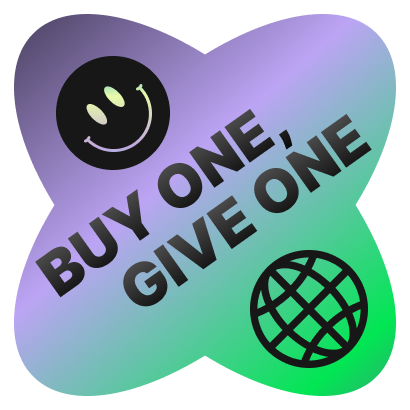I am constantly disappointed and thrilled by AI, every time I have found its limits a new update or new application comes out that pushes it a leap further, but recently I have been thinking about the general beige-ification of creativity. Is AI propelling this trend, or does it hold untapped potential as a creative ally?
We have been using AI for several years and even developed ChatGPT before ChatGPT, an app named The Oracle using OpenAI’s LLM, which was unceremoniously shut down due to OpenAI launching the actual ChatGPT soon after. No doubt we weren’t the only ones using the LLM in this way and open AI saw the commercial opportunity. Here are some observations from using LLMs and their various apps over the last few years and how we apply them to creativity at Paper Moose.
The dangers of AI in creativity
AI’s prowess in generating text, music, and images is undeniably impressive, capable of digesting vast datasets and spotting trends with precision beyond us mere mortals. However, this strength is also its weakness, its reliance on frequent patterns often results in predictable, and dull outputs. Creativity thrives on the unpredictable, the new, and the genuine—qualities that AI cannot replicate because it is trained on the old.
The value of human creativity
At Paper Moose, our purpose is to spark positive change through creativity. But with creative outputs easier than ever to churn out with AI, how do we discern between human creativity and the artificial? Does it even matter? We think so. Here’s how we are striving to maintain our creative integrity:
- Ensure that we continue to expose ourselves to incredible art, creativity and human ingenuity. This is not to say that AI cannot be in the mix here, but we need to always make sure we are being moulded ourselves by a variety of influences. This includes being surrounded by people with diverse backgrounds and experiences. One of the many things we do at Moose is to run a fortnightly movie night where we watch fringe films or classics that the team might not have been exposed to, it pushes our tastes and stretches our sensibilities. DON’T EVER GET TOO COMFORTABLE.
- Use AI as a creative tool in our toolbelt, not the primary way to do the thinking and the hard work. We need to ensure that we are the ones in the director’s chair at all times. Initially, to write this article, I asked my friend Chat to work up an article around the potential risks and rewards of AI in creativity. It came back with something very safe and tonally insipid. It’s important for us to sit and bang our head on the table and work through the hard stuff, then perhaps use AI to assist when we get totally blocked. In that way, I enjoy working with it as a thought partner, but I am always the editor, the director, guiding it and not having it guide me.
- Beware of its influence - We need to remain vigilant of its ability to shape us and our taste. Recently, on an episode of The Mucky Middle, Margy Vary and I were discussing how one of her fellow Master students had been penalised for using ChatGPT in the writing of their essay, the person hadn’t in fact used the tool in this instance, but had been using it so much that they had adopted the same writing style UNCONSCIOUSLY. We are influenced by everything around us and if we use these tools they will slowly shape us.
- Consider the ethics - There are myriad of ethical issues when using AI notwithstanding the issues around IP infringement and we need to continually question whether we are using the tools in a way that is ethical and ensuring the outcome is not going to cause harm to anyone. As a BCorp it is super important to us that we are always operating for the benefit of all stakeholders and the use of AI is a really tricky one. Open AI has held off releasing some new features as they fear how it might have disastrous repercussions on the upcoming elections around the world, when the creators of the technology start becoming afraid this is a reason to watch closely.
- Experiment and understand it. We need to ensure that while there are potential risks, the biggest danger is in not engaging. It's a disruptive technology that will only turn our world upside down if we let it. Don’t put your head in the sand, master the technology and use it to your advantage.
In November of 2008, the Canon 5DMkII was released and with it suddenly cinematic filmmaking was readily accessible to a bunch of poor artists who wanted to make films. Paper Moose was born out of this technological leap and it spurred a whole generation of film-makers. I hope that AI will be an even greater tool in helping people manifest their ideas. For the business, I see it taking away some of the low-level tasks (at least for now) and allowing us to focus on the higher-level brand strategy and storytelling, which, let’s face it, is the stuff we get out of bed for.
In summary, AI in creativity is a paradox—both a challenge to our traditional notions of creativity and a magnificent tool for innovation. At Paper Moose, we choose to ride this wave thoughtfully, ensuring that each creative endeavour is as vibrant and original as possible, far from the dreary shores of beige.
We acknowledge the Traditional Custodians of the land upon which we create, the Gadigal People of the Eora Nation. We pay our respect to their Elders past and present, and extend that respect to all Aboriginal and Torres Strait Islander peoples today.
Always was, always will be, Aboriginal land.



